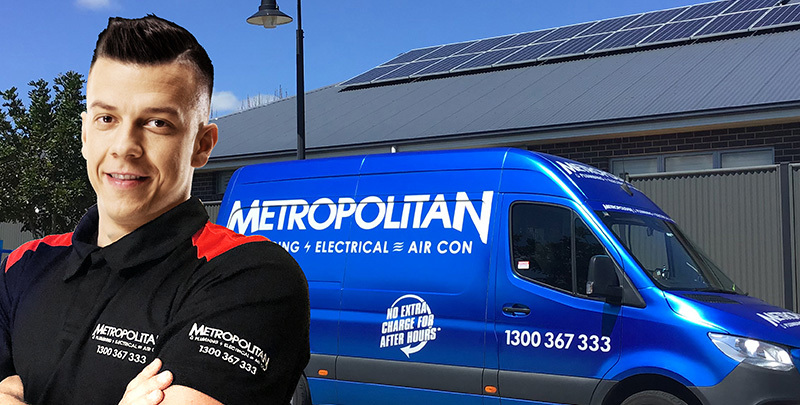
What is the Most Common Cause of Pipe Damage?
Pipes are the unsung heroes of our homes, silently carrying water and waste to keep our lives running smoothly. But what happens to water pipes when they’re not in good shape?
That’s where the trouble begins. In this guide, we’ll dive deep into pipe damage, exploring its significance and the importance of understanding its common causes.
What is Pipe Damage?
Pipe damage refers to any harm, deterioration, or structural issues in the pipe that transports fluids, gases, or other substances. Pipe damage can occur for various reasons, ranging from minor to severe structural problems.
Why Pipe Damage Occurs
Pipe damage can occur for various reasons, often resulting in costly repairs and inconveniences. Understanding the common causes of pipe damage is essential for preventing and addressing plumbing issues effectively. Here are some reasons why pipe damage occurs:
Corrosion
Corrosion is like the slow but relentless villain in the world of plumbing. It occurs when pipes deteriorate due to chemical reactions with water and other substances. It can lead to leaks, blockages, and even burst pipes. There are different types of corrosion, including rust, pitting, and galvanic corrosion. Rust, for example, is the reddish-brown flakes you might spot on older iron pipes. These flakes weaken the metal, making it more prone to damage. To tackle corrosion, regular inspections and treatments of metal pipes are essential.
Tree root intrusion
Nature’s quest for water can wreak havoc on your pipes. Tree roots, in particular, are notorious for infiltrating and damaging underground pipes and plumbing. As trees seek moisture, their roots penetrate pipe joints and cracks, causing blockages and leaks. Consider planting trees away from your plumbing lines or using root barriers to prevent tree root intrusion. If you suspect tree root damage, consult a professional plumber who can employ techniques like root cutting or pipelining.
Age and wear
Pipes, like everything else, age over time. As they do, wear and tear become inevitable. Older lines are more susceptible to damage, manifesting as leaks, rust, broken or damaged pipes and weakened joints. Signs of wear and tear include discoloured water, strange noises, and decreased water pressure. Regularly checking your plumbing system and replacing aging pipes can save you from costly repairs.
Poor installation
Proper installation is the foundation of a healthy plumbing system. Not adequately installed pipes can result in leaks, clogs, and inefficient water flow. It’s crucial to hire experienced professionals for installation work. They understand the nuances of the plumbing emergency pipe positioning, sealing, and joint connections, ensuring your plumbing system functions optimally.
High water pressure
While high water pressure might feel invigorating in your shower, it can harm your pipes. Excessive force can stress and damage pipes over time, leading to leaks or even line bursts themselves. To combat this, invest in a pressure regulator that maintains the ideal pressure for your plumbing system. Routine maintenance checks will also help you detect and address pressure-related issues.
Detecting Pipe Damage
Detecting pipe damage early is the key to preventing extensive repairs and water damage.
- Visual inspection: Perform regular visual inspections of your plumbing system. Look for signs like water stains, corrosion, or pipe cracks. Check for drips or puddles around fixtures and leaking pipes, as these could indicate leaks. Visual inspections should be part of your routine home maintenance.
- Water quality changes: Changes in water quality can be a subtle indicator of pipe damage. If you notice a metallic taste or discolouration in your water, it may indicate corroded or damaged pipes. Unusual odours or sudden shifts in water temperature should also raise concerns. These changes can hint at hidden issues within your plumbing system.
- Water pressure fluctuations: Inconsistent water pressure can signal problems within your pipes. If you experience sudden drops in pressure or fluctuations while using water fixtures, it’s worth investigating further. It could be due to blockages, leaks in the water supply or pressure regulator issues.
- Professional inspection: Sometimes, detecting pipe damage requires a trained eye. Calling a professional plumber for a thorough inspection is advisable, especially if you suspect hidden issues or broken pipes. They have the expertise and tools to pinpoint problems absent during DIY inspections.
Preventing Pipe Damage
Prevention is always better than cure when it comes to pipe damage.
- Regular maintenance: Routine plumbing maintenance is your first line of defence. Create a maintenance checklist that includes cleaning drains, inspecting exposed pipes like water pipes, and checking for leaks. Stick to a schedule to ensure your plumbing system stays in top shape.
- Tree and shrubbery management: To prevent tree root intrusion, carefully plan your landscaping. Avoid planting large trees near underground plumbing lines. Consider installing root barriers or using slow-release root control chemicals if necessary. Regularly trim and maintain existing trees and shrubs to keep their roots in check.
- Temperature control: Extreme temperatures can stress your pipes. In cold climates, insulate pipes to prevent freezing and bursting. Install heating cables or tape in areas prone to freezing. Protect pipes from excessive heat in hot climates to avoid warping or damage.
- Proper installation and repairs: Always prioritise professional installation and repairs for emergency plumbing services. When it’s time for a replacement or repair, hire qualified plumbers with a track record of quality work. Proper installation ensures that you set up your pipes for long-term success.
Repairing Pipe Damage
When damage occurs, prompt action is crucial.
Repairing pipe damage is a common task for professional plumbers. Pipes can be damaged for various reasons, including corrosion, freezing, physical impact, or wear and tear. Here are the typical steps a professional plumber would follow to repair pipe damage:
Assessment
The first step is to identify the extent of the damage. The plumber will inspect the affected area, including the pipes, fittings, and surrounding structures, to determine the cause and severity of the damage.
Isolation
If the damaged section of the pipe is part of a more extensive plumbing system, the plumber may shut off the water supply to that section or the entire system. This prevents further water leakage and allows for safe repairs.
Safety measures
Safety is a priority. The plumber will wear appropriate safety gear, including gloves and eye protection, as needed. We will address any hazards, such as gas leaks or electrical components, nearby first to ensure a safe work environment.
Drain water
If the damaged pipe contains water, it must be drained. The plumber may use various methods, including opening faucets or a pump, to remove the water from the affected area.
Cutting and removing damaged section
The plumber will cut out the damaged section of the pipe. It may involve using pipe cutters or saws. We make clean, square cuts to ensure a proper fit with replacement pipes.
Selecting replacement materials
Depending on the type of pipe and its purpose (e.g., water supply, drain, gas), the plumber will choose appropriate replacement materials.
Preparation and installation
The plumber will prepare the replacement pipe by deburring and cleaning the ends to ensure a secure connection. They will then install the replacement pipe using appropriate fittings and connectors. Depending on the pipe material, it may involve soldering, gluing, or threading.
Pressure testing
After the necessary repairs, the plumber will pressurise the system to check for leaks or weak spots. This step ensures that the repaired section is functioning correctly without further issues.
Sealing and insulating
Once the repair is leak-free, the plumber will seal joints and connections and insulate pipes, if needed, to prevent future damage.
Restoration
If any walls, floors, or ceilings have been opened during the repair process, the plumber may assist with the restoration work or recommend other professionals, such as drywall specialists, to complete the job.
Final inspection
The plumber will perform a final inspection to ensure everything is in order and the plumbing system works as expected.
Cleanup
The plumber will clean up the work area, remove debris, and dispose of materials properly.
Documentation
It’s common for plumbers to provide repair documentation, including details of the work performed, parts used, and any warranties or guarantees.
Hiring a licensed and experienced plumber for pipe repairs is essential to ensure the job is done correctly and complies with local plumbing codes and regulations. Plumbing repairs can vary in complexity, so the specific steps involved may differ depending on the nature and severity of the damage.
Seek a Professional for Help
In conclusion, understanding the most common causes of pipe damage is essential for every homeowner. By recognising the signs and taking preventive measures, you can extend the life of your plumbing system and avoid costly repairs.
Remember, when in doubt, don’t hesitate to seek professional help. Maintaining your pipes is not just about convenience; it’s about safeguarding your home and wallet.
Please note: This information is provided for advice purposes only. Regulations differ from state to state, so please consult your local authorities or an industry professional before proceeding with any work. See our Terms & Conditions here.
Published: 2023-11-14

















